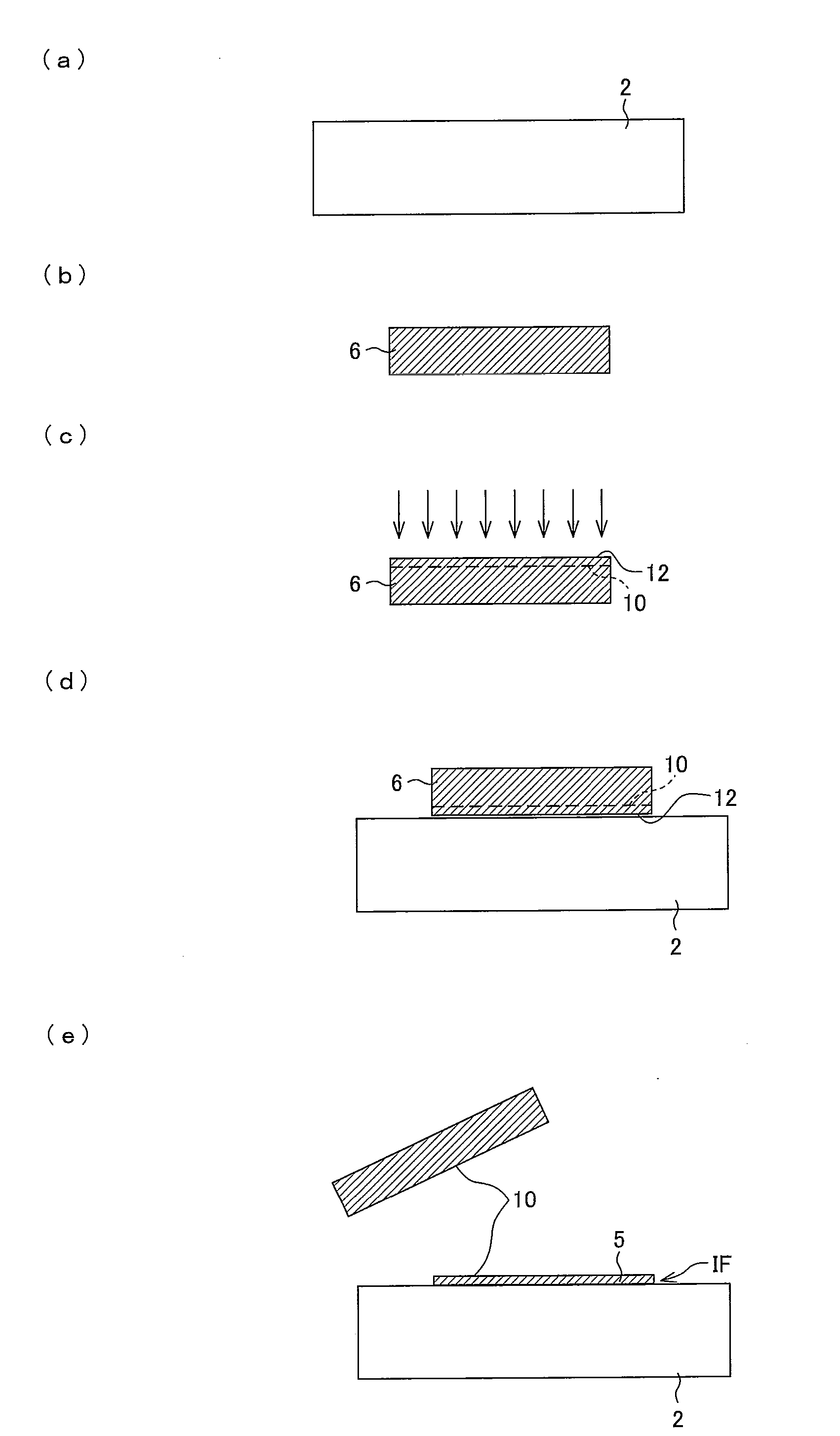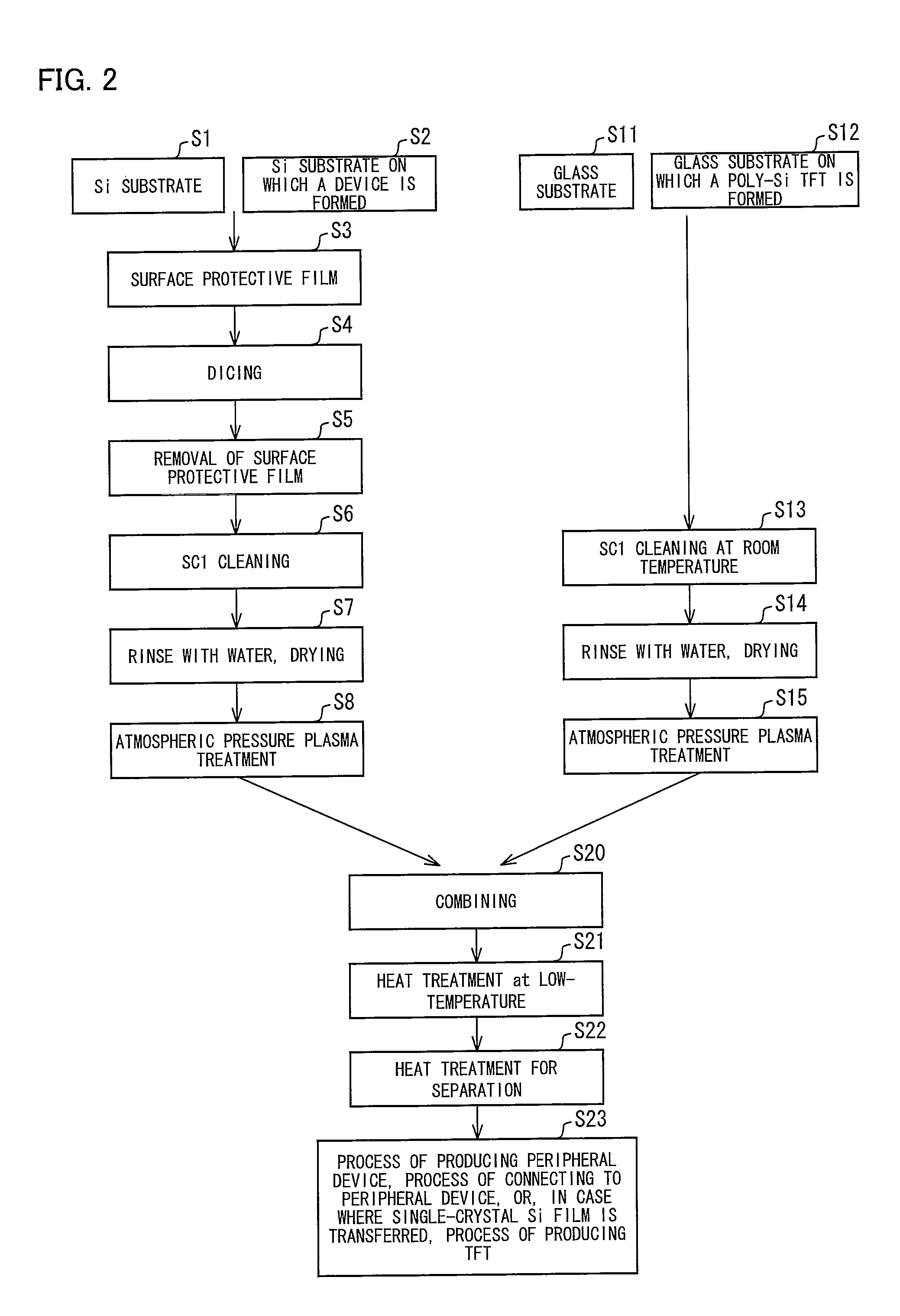Method for producing semiconductor device and semiconductor device produced by same method
- Summary
- Abstract
- Description
- Claims
- Application Information
AI Technical Summary
Benefits of technology
Problems solved by technology
Method used
Image
Examples
example 1
[0187]A device in which a peeled layer was formed by implanting hydrogen into a single-crystal Si substrate was prepared. Next, a SiO2 film was formed on a surface of the device. The SiO2 film was planarized by CMP. Note that the hydrogen was implanted under the condition that implanting energy is 150 keV and an implanting rate is 6 E 16 cm−2.
[0188]The device, having the SiO2 film on its surface, was heated in vacuum at 350° C. for 2 hours so as to cause gases such as H2 and H2O to escape from the film. The device was cut, by a method such as the dicing, so as to have a desired size, and is then subjected to a surface treatment (SC1 treatment) so as to have hydrophilicity.
[0189]A similar surface treatment was carried out with respect to a glass substrate, onto which the device was to be transferred. After that, the transferring was carried out by directly combining the device with a surface of the glass substrate.
[0190]A part of the device was peeled under the condition that a tempe...
example 2
[0192]A peeled layer was formed by thermally oxidizing a single-crystal Si substrate, and then by implanting hydrogen into the single-crystal Si substrate. A surface treatment (SC1 treatment) was carried out with respect to the single-crystal Si substrate and a glass substrate onto which the single-crystal Si substrate was to be transferred. Then, the single-crystal Si substrate was transferred onto the glass substrate by combining the substrates with each other. Note that the glass substrate can be cut so as to have a desired size.
[0193]The device prepared by the above method had a bubble density of not more than five bubbles / cm2.
example 3
[0194]A device in which a peeled layer was formed by implanting H or hydrogen into a single-crystal Si substrate was prepared. Next, a SiO2 film was formed on a surface of the device. The SiO2 film was planarized by CMP. Note that the hydrogen was implanted under the condition that implanting energy is 130 keV and an implanting rate is 4 E 16 cm−2.
[0195]The device was cut by the dicing so as to have a desired size. Then, a surface treatment was carried out with respect to a glass substrate onto which the device was to be transferred. After that, the transferring was carried out by combining the device with the glass substrate.
[0196]A part of the device was peeled under the condition that a temperature-raising rate was 5° C. / min and a heating temperature was within a range from 550° C. to 700° C. The heat treatment increases a binding energy in the interface. After the part of the device was peeled, (i) the heat treatment was ended immediately and (ii) the part thus peeled was remove...
PUM
 Login to View More
Login to View More Abstract
Description
Claims
Application Information
 Login to View More
Login to View More - R&D
- Intellectual Property
- Life Sciences
- Materials
- Tech Scout
- Unparalleled Data Quality
- Higher Quality Content
- 60% Fewer Hallucinations
Browse by: Latest US Patents, China's latest patents, Technical Efficacy Thesaurus, Application Domain, Technology Topic, Popular Technical Reports.
© 2025 PatSnap. All rights reserved.Legal|Privacy policy|Modern Slavery Act Transparency Statement|Sitemap|About US| Contact US: help@patsnap.com



